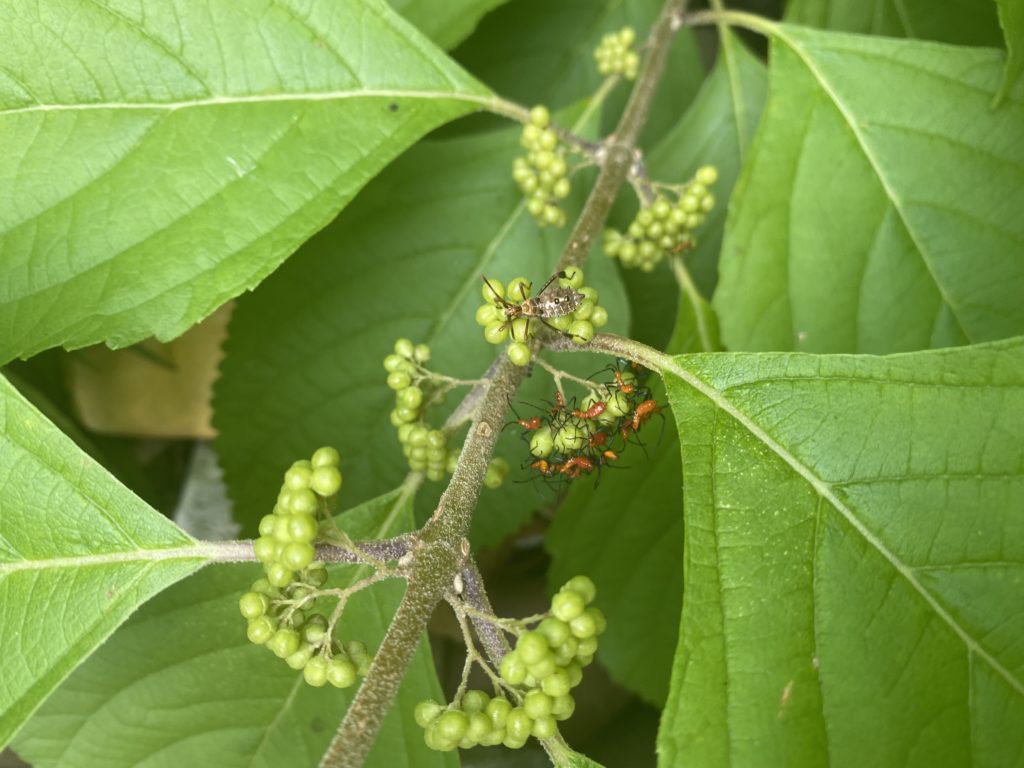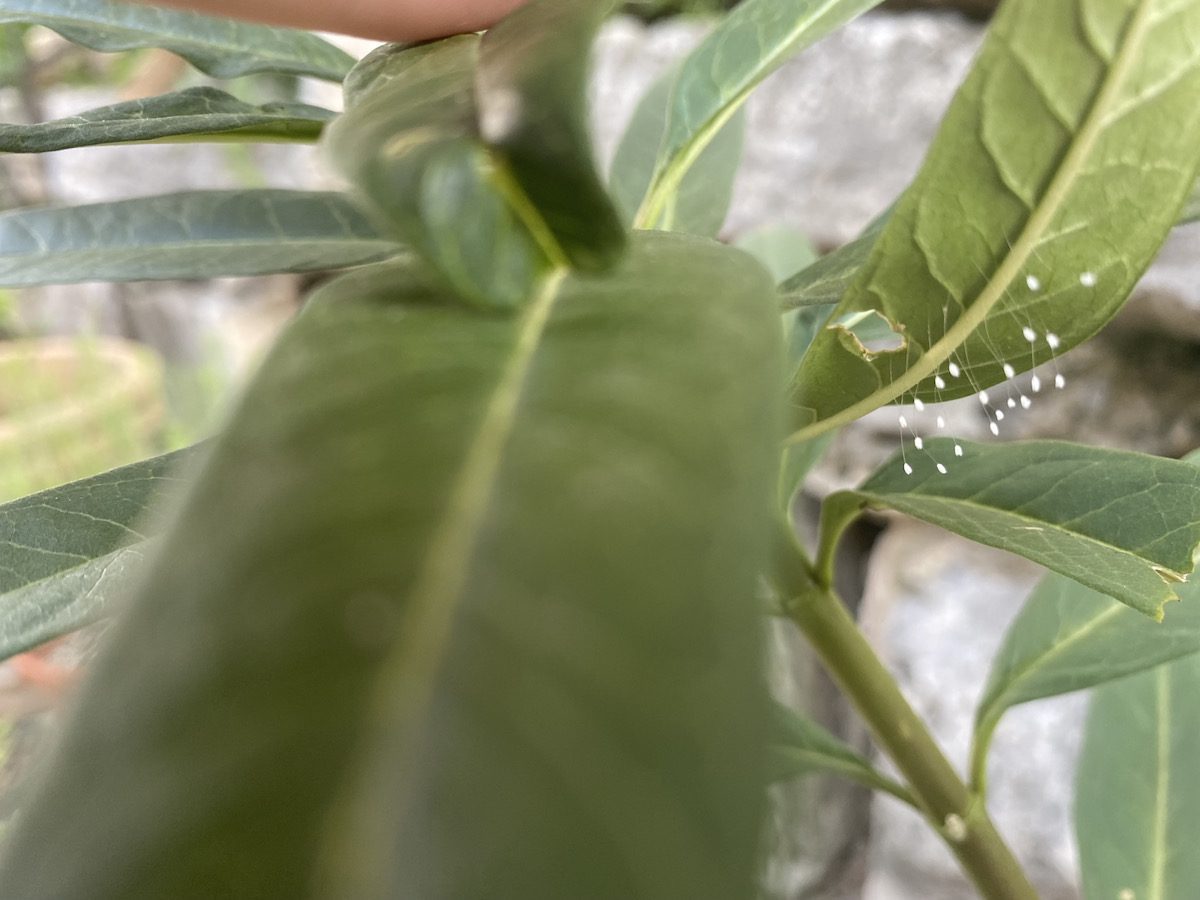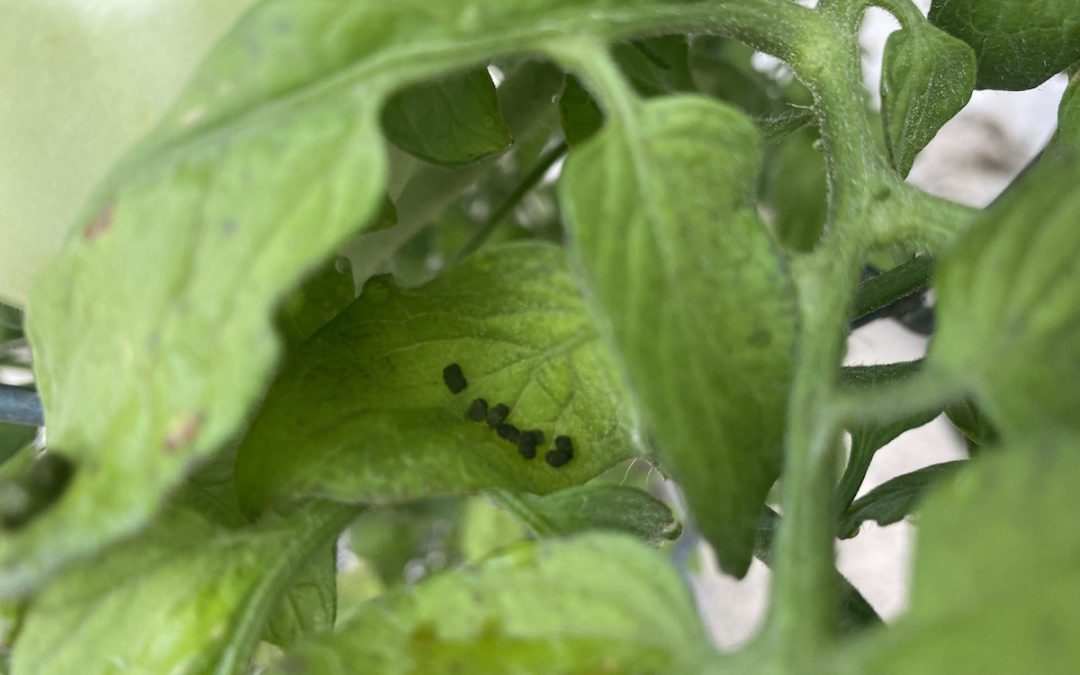There’s a valid reason we tend to stress observing leaves as one of your most powerful gardening tools. Things can change in a day or overnight in the gardening world. Have you ever noticed one or two holes in the leaf of a broccoli plant and thought, “hmmm… interesting,” only to go back in a couple of days and barely be able to find the leaf at all? Those first holes you noticed might have been your only warning sign before full scale decimation takes place. Leaves can tell you a lot about what is going on with the health of your plants and the activity that is happening on them. Let’s look a little closer, shall we? Also do this with your leaves! 🙂
How Leaves Help Solve Gardening Problems

1. Leaves are favorite hideouts of pests (and beneficial insects too). The lush, vegetative growth of plant foliage makes the perfect spot for pests to do their dirty work under cover. And I mean literally under cover; most pests prefer to lay eggs on the undersides of leaves or attach themselves under there to be protected from predators, elements, and our inquiring eyes.
This is one of the main reasons people complain about pesticides sprays not working as effectively as they could. Many times a gardener will spray their plants but miss targeting the undersides of leaves. The plant gets drenched, but your pests remain unscathed as if they have been sitting under a protective umbrella. The undersides of your leaves must be addressed. (Extra note here: Invest in a sprayer that has an adjustable nozzle that can turn and target from underneath. Take care to protect your eyes!)
Pesticide PSA: You know how I love my Public Service Announcements! I’d just like to insert here that before spraying the undersides of your leaves for pests, take some time to look for any beneficial insects that may be under there as well. Beneficial insects ALSO like to hang out under leaves, and if you spray for pests, you will be wiping out these beneficials that could most likely do your pest control for you.

Occa2. Discoloration on Leaves: Yellowing leaves, mottled leaves, specked leaves, shriveled dried up leaves, leaves with fuzzy white substances, or stick, sooty substances are signs that SOMETHING is going on with the health or vitality of your plant. The lists are long for what the the problems may but any change in the color of the leaves on your plants warrants an investigation.
Investigating is what you’ll need to do indeed. Your yellowing leaves may be solved by a simple “too much or too little watering” adjustment, but only you will know how much or how little watering you’ve been doing. The milkweed tree pictured above was in serious need of repotting. The leaves were telling yellow and falling off because while it was in the transplant pot it wasn’t receiving adequate water no matter how much it got. The roots were too bound to take it up. When I got off my lazy bum to repot it, the problem stopped. Had I waited much longer, I met have lost all the leaves!
Knowing your plants, what types of fertilizers they may need (acidic, or all purpose) and which ones naturally change foliage colors can also help prevent you from running out to buy fungus control products or other products you may not actually need. Our Plant Finder Learning Tool on our website is a great place to find extra information on plants and their needs. I encourage you to use it for research over this winter and really learn about any plants you are interested in. Occasionally discoloration on your leaves might very well warrant a fungicide, we’ll help you figure it out if you get stumped.

3. Physical Damage (or evidence) on Leaves: Back to those holes we talked about in the first paragraph. Chances are, if there are one or two holes one day they will likely double or more by the next day. Fast forward to a couple of days later and bye-bye leaf (or you’ll have a skeletonized version of what you had at best)! Cabbage loopers make quick work of cole crops overnight, flea beetles create a shotgun pattern by chewing tiny holes in a leaf, destroying its structure and integrity, creating an unhealthy plant. Grasshoppers chomp big chunks out of leaves and the list goes on and on. But if you are observant, there are almost always warning signs before complete devastation. You just have to look for them.
Frass (caterpillar poop) presents as little black pellets and is left behind on leaves or around the base of the plant after offenders have been visiting (remember some caterpillars turn into beautiful butterflies). You may be able to pluck off the culprit of a teeny tiny hole in your leaf if you just turn the leaf over and look. Maybe you’ll find a small web holding cabbage looper eggs or the larvae themselves (they prefer to eat underneath).
Remember my PSA from above! Beneficial insects are also hiding under the leaves. You may find pests AND beneficials together, such as in the picture above (yellow ladybug eggs grouped together, and aphids waiting to be devoured by them once they hatch). Green Lacewings are difficult to spot (pic below), but once you know what to look for, and if you aren’t spraying chemicals all around your yard, I bet you start seeing them more often.
Researching insects and getting to know which are harmful and which are beneficial is such a great skill to develop when you are a gardener.

When it comes to troubleshooting plant problems, you know we are always here for you. You can always bring Rainbow Gardens samples of your problems (please secure in a plastic bag), so we can help you identify the issue. We are also in the process of revamping our Learning Center and hope to fill it with more troubleshooting facts and bring it to you very soon!
I guess my whole point of this blog is to really encourage you to be your own advocate when it comes to gardening. Your plants can’t talk to you, but really, they kind of can. They generally offer you multiple signs and signals, hoping that you will take notice and help out. Will you?
~The Happy Gardener, Lisa Mulroy


we are looking for a specialist who can help us with oak wilt. Can you recommend someone or somewhere to look?
thanks!
Hi Nancy,
I’d recommend contacting Bare Nature Tree Surgeons. We have worked with them for multiple services, and think they may be able to assist you. Their phone number is 201-540-4669.